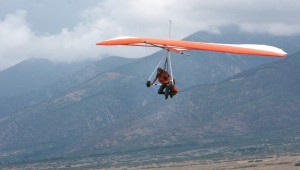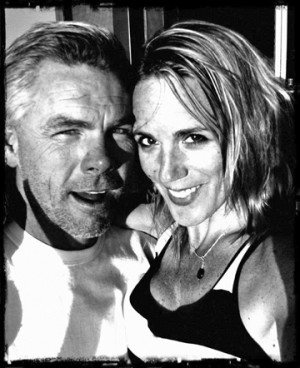By Hal Walter
As cows go, she was an amazing animal, one of the original 14 head of cattle purchased from Virgil Lawson when we started this little venture in natural beef seven years ago. He insisted we had to have her as a “lead cow.” She’d keep the herd together, and was “bucket trained.”
You’re not suppose to name animals you might someday eat, but this solid black cow came with a name and it was Sophie.
Registered with the American Maine-Anjou Association as “SDWL Lasting Impression,” she was born Feb. 18, 2001. She lived four years at the Lawson Ranch in Wetmore before we purchased her as part of a package deal Virgil put together a few months before he passed away. True to Virgil’s word, Sophie was the herd matriarch, and if you pointed her toward the corral she brought the entire herd with her.
In the early years I’d haul the cattle to Avondale where they would winter at Doug Wiley’s ranch. Sophie would jump into the open-top stock trailer for the ride like a 1,600-pound dog. I always was amused at the way she would raise her huge head up out of the trailer and flop her ears about in the breeze as we rolled down the road. Spring or fall, up the mountain or back down, she always seemed to enjoy the journey.
The more time I spend around bovines, the more I learn to appreciate their approach to life. Every day is a gift to them. They seem to know, and have a quiet acceptance, for the fact that in the end they are meat. They also learn to accept and trust the person who takes care of them. Everyone else, whether a visitor or a veterinarian, is suspect, and likely to spark fear.
Sophie arrived here with an calf, and she would have five more during the time she spent with us. Late last summer I noticed her breathing was labored. There was a discharge from her nostrils, and some minor weight loss. When her condition didn’t improve after a few days, I called the vet.
We do things as naturally as possible around here, and giving antibiotics is not a light decision. However, when we feel it may be a matter of life or death we go ahead and medicate. Sophie received several rounds of both injected and oral antibiotics. Sometimes the symptoms seemed to improve slightly for a short time, but the nasal discharge persisted, often with blood. And the weight loss continued despite supplementing the diet with grain and “range cake.” In the coming weeks I would consult with other vets. We learned that she was pregnant, and at some point it was agreed we’d done all we could do for her from a veterinary standpoint, but it was agreed we should try to keep her alive in the hopes of having a calf.
I contacted a local homeopath who devised a series of remedies I delivered mostly by sprinkling onto plain oats, but also by pouring on Sophie’s nose when she would allow it. As with the antibiotics, there was improvement in the respiratory symptoms, followed by relapses, then more improvement. Still, the weight loss continued and I began to wonder if Sophie might have cancer.
Throughout the spring I continued with the homeopathic remedies. These seemed to improve the quality of Sophie’s existence, reduce symptoms, help her breathe more comfortably. Although I believe they brought her some relief, the weight loss continued. At some point I decided that Dr. Green – spring grass – was the last hope and I put her out on the pasture.
The projected calving month of May came and went, meaning she had aborted the calf somewhere along the line. She was rack of bones, losing hair, and the flies were making her miserable. It became not a matter of whether or not, but when, and how to deal with the carcass? We had too much respect for this animal to simply send her to a rendering plant. Finally it was decided to put her down on the ranch and donate the beef to Mission Wolf, a local animal refuge, so she wouldn’t go to waste.
So I made the arrangements with Mission Wolf, and on the appointed day she arrived at the pasture gate, where I spoke to her in gratitude before she passed on her way. I imagined her big ears flopping in the breeze, and saw a peacefulness in her eyes that knows no end.
In an incongruous moment of New West comic relief two young guys with dreadlocks and piercings winched the carcass into the bed of a truck and hauled her away. I can take some comfort she went to a good cause. Wolf meat.
The very next morning another cow, this one known only as “H-1”, appeared from the brush with a new solid-black heifer calf. Life and death on the ranch. So it goes.
Hal Walter writes and edits from the Wet Mountains. You can keep up with him regularly at his blog: www.hardscrabbletimes.com


